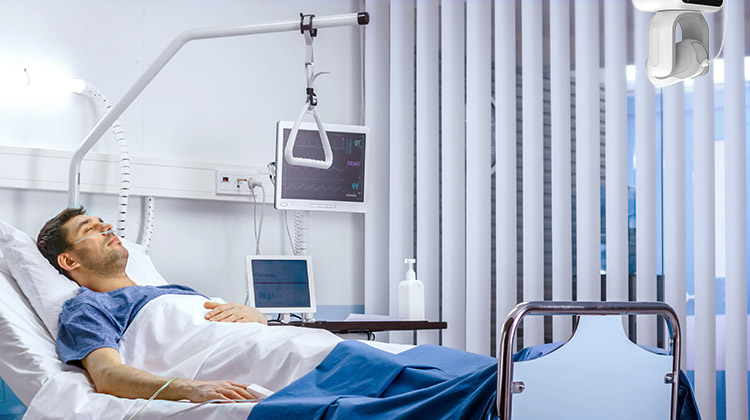The past few years have stretched healthcare systems worldwide to the limit, forcing them to rapidly adapt in the battle against Covid-19. Nurse burnout and high turnover rates among ICU staff are a persistent problem that has been exacerbated by the pandemic. A 2019 National Academies of Medicine study reported that up to 54% of nurses and physicians suffered from burnout.
Challenges that healthcare systems have faced from the pandemic, notably lack of critical care nurses (also called intensivists) has catalyzed the global demand for Tele-ICU in healthcare. Tele-ICU allows remote intensivists and doctors to observe a patient using real-time audiovisual communication. This, along with electronic monitoring and access to patients’ medical data connects remote specialists to onsite caregivers. This system maximizes manpower: time spent doing hospital rounds can be used for more important care duties.
Implementation of Tele-ICU also reduces the financial burden on hospitals associated with employee burnout and turnover. A 2018 Medscape study found that 23% of respondents felt that burnout could be reduced by increasing doctors’ sense of control and autonomy. Tele-ICU can provide both control and autonomy to overworked employees engaged in the crucial duty of saving lives.
Why is Tele-ICU the solution?

Tele-ICU concentrates and maximizes a facility’s clinical resources and addresses intensivist shortages by allowing remote intensivists to care for multiple patients simultaneously. Bedside nurses are able to make better use of their time, attending to more important care duties instead of doing nursing rounds. Furthermore, Tele-ICU is a cost-effective system, reducing hospital length of stay by 36% according to a Taylor and Francis study.
The benefits of Tele-ICU are manifold and save more lives at a lower cost. A study in Cleveland found an 18% decrease in mortality risk for Tele-ICU patients. This is made possible in part by lower intensivist to patient ratios. The instant nature of Tele-ICU allows bedside nurses to quickly respond to any alerts from the Tele-ICU system, and immediately contact intensivists for guidance in best practice. Providing patients with correct treatment in turn decreases malpractice, mortality rates, and associated costs.
Global shortages in critical care specialists and the urbanized nature of medical facilities, specifically in developing countries have historically impeded patient access to specialist care. Tele-ICU allows clinics in even the most remote areas to have instant access to intensivists and specialist physicians who are able to advise bedside nurses. Also, patients who would normally have to travel great distances to access specialist care can now be treated in their local communities, where they are provided with a higher quality of care.
Since the outbreak of Covid-19, Personal Protective Equipment (PPE) has become an essential, and often scarce commodity for medical staff caring for patients in Covid isolation wards. Tele-ICU reduces the need for staff to repeatedly don and doff PPE when entering isolation wards, saving on PPE resources and time while reducing the risk of cross infection to healthcare workers.
How does Tele-ICU work?

Tele-ICU uses PTZ (pan, tilt, and zoom) cameras to provide real-time, complete coverage of a patient’s room, leaving no blind spots. Remote intensivists also have instant access to medical data and patient’s vital signs helping them to advise onsite staff accordingly. Instant bedside monitoring and two way communication gives hospitals 24/7 access to remote intensivists and specialist physicians.
There are two main models of Tele-ICU. The first model is multiple satellite ICU facilities connected to a central remote health facility staffed with intensivists and doctors. In this care model, onsite caregivers have round the clock, instant access to expert guidance and assistance. This model is particularly effective in connecting clinics in understaffed rural areas to remote specialists.
The second model has been widely embraced by hospitals to safely care for patients in isolation wards during the pandemic. Multiple patient rooms can be monitored by staff in a remote centralized room or a nursing station in the same hospital, and patients can be safely observed in detail and attended to as needed.
Tele-ICU provides a dynamic, much needed solution to multiple issues in today’s medical sector. By saving lives and saving resources, Tele-ICU will become a long-term integral part of global healthcare.
References